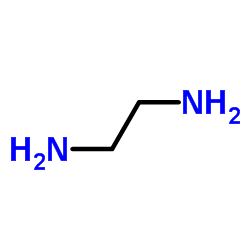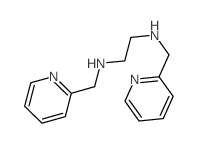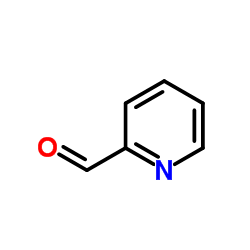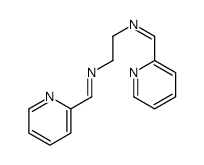TPEN
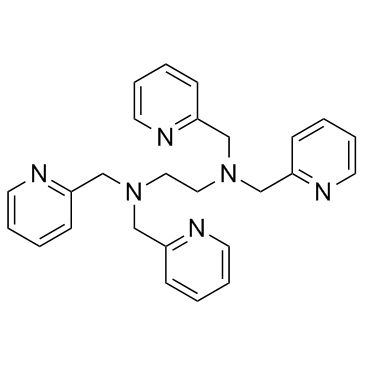
TPEN structure
|
Common Name | TPEN | ||
|---|---|---|---|---|
| CAS Number | 16858-02-9 | Molecular Weight | 424.541 | |
| Density | 1.2±0.1 g/cm3 | Boiling Point | 542.1±45.0 °C at 760 mmHg | |
| Molecular Formula | C26H28N6 | Melting Point | 110-112 °C | |
| MSDS | Chinese USA | Flash Point | 281.7±28.7 °C | |
| Symbol |

GHS07 |
Signal Word | Warning | |
Use of TPENTPEN is a specific cell-permeable heavy metal chelator. |
| Name | N,N,N′,N′-Tetrakis(2-pyridylmethyl)ethylenediamine |
|---|---|
| Synonym | More Synonyms |
| Description | TPEN is a specific cell-permeable heavy metal chelator. |
|---|---|
| Related Catalog | |
| In Vitro | Heavy metal chelator TPEN attenuates fura-2 fluorescence changes induced by cadmium, mercury and methylmercury. TPEN, a cell-permeable chelator for heavy metal cations with a low affinity for Ca2+. In cells stimulated with 10 or 30 μM cadmium chloride, the addition of TPEN at 3 hr after exposure significantly decreases the elevated fura-2 fluorescence ratio to the basal levels within 10 min (119.6±2.4% or 109±1.5% decrease in ΔRatio (F340/F380) induced by 10 or 30 μM cadmium chloride, respectively), suggesting that a cadmium chloride-induced increase in the fura-2 fluorescence ratio is dependent on an increase in intracellular heavy metal cations but not intracellular Ca2+[1]. TPEN is a metal chelator, which targets colon cancer cells through redox cycling of copper. TPEN reduces cell viability in a dose- and time-dependent manner. TPEN-induced cell death is also dependent on the redox cycling of copper since the copper chelator neocuproine inhibited DNA damage and reduced pChk1, γ-H2AX, and ATM protein expression. Cell death by low TPEN concentrations, involved ATM/ATR signaling in all 3 cell lines, since pre-incubation with specific inhibitors of ATM and DNA-PK led to the recovery of cells from TPEN-induced DNA damage[2]. |
| Cell Assay | Human neuroblastoma cell line SH-SY5Y, are grown in Dulbecco’s Modified Eagle’s Medium (DMEM) mixed 1:1 with Ham’s F-12 nutrient mixture containing 10% fetal bovine serum, 100 unit/mL penicillin and 100 μg/mL streptomycin at 37°C in a humidified 5% CO2 atmosphere. Two days before experimentation, cells are seeded at a density of 7×104 cells/cm2 in a 96-well plate. Cells in a 96-well plate are serum-starved for 4 hr; calcium indicator fura-2 is then loaded into the cells by using Calcium kit II fura-2. In brief, SH-SY5Ycells are incubated with 5 μM fura-2/AM in the presence of 0.04% Pluronic F-127, a dispersing agent to improve the efficiency of loading with fura-2, and 1.25 mM probenecid, a blocker of organic anion transport to prevent leakage of fura-2 from cells. After 1 hr incubation at 37°C, fura-2 fluorescence is measured at 500 nm emission after excitation at 340 nm (F340) or 380 nm (F380) using an Infinite M200 plate reader at 37°C.The change in [Ca2+]i is reflected by the ratio of F340 and F380. To determine the changes in fura-2 fluorescence ratio induced by heavy metal compounds, cells are treated with manganese chloride, lead acetate, cadmium chloride , mercuric chloride and MeHg chloride dissolved in distilled water. We confirmed that the cells adhered to the bottom of the plate after 6 hr exposure to heavy metal compounds. The cells are also treated with three Ca2+ channel blockers, lanthanum chloride dissolved in distilled water, verapamil and 2-APB dissolved in DMSO, 30 min before heavy metal exposure. The heavy metal chelator TPEN is dissolved in DMSO and added 3 hr after the stimulation with heavy metals to determine the contribution of endogenous and exogenous heavy metals on fura-2 fluorescence changes. We measured the effect of TPEN (20 μM) on the fura-2 fluorescence ratio after a 10 min treatment with TPEN, since our preliminary experiments showed that the effect of TPEN on fura-2 fluorescence reached maximum and stabilized within 10 min of the treatment[1]. |
| References |
| Density | 1.2±0.1 g/cm3 |
|---|---|
| Boiling Point | 542.1±45.0 °C at 760 mmHg |
| Melting Point | 110-112 °C |
| Molecular Formula | C26H28N6 |
| Molecular Weight | 424.541 |
| Flash Point | 281.7±28.7 °C |
| Exact Mass | 424.237549 |
| PSA | 58.04000 |
| LogP | 2.68 |
| Vapour Pressure | 0.0±1.4 mmHg at 25°C |
| Index of Refraction | 1.632 |
| Storage condition | Refrigerator |
| Symbol |

GHS07 |
|---|---|
| Signal Word | Warning |
| Hazard Statements | H315-H319-H335 |
| Precautionary Statements | P261-P305 + P351 + P338 |
| Personal Protective Equipment | dust mask type N95 (US);Eyeshields;Gloves |
| Hazard Codes | Xi: Irritant; |
| Risk Phrases | R36/37/38 |
| Safety Phrases | S26-S36 |
| RIDADR | NONH for all modes of transport |
| WGK Germany | 3 |
| HS Code | 2933399090 |
|
~66% 
TPEN CAS#:16858-02-9 |
| Literature: Synthesis, , # 6 p. 539 - 540 |
|
~75% 
TPEN CAS#:16858-02-9 |
| Literature: Synthesis, , # 6 p. 539 - 540 |
|
~% 
TPEN CAS#:16858-02-9 |
| Literature: Acta Chemica Scandinavica, , vol. 53, # 12 p. 1083 - 1092 |
|
~% 
TPEN CAS#:16858-02-9 |
| Literature: Acta Chemica Scandinavica, , vol. 53, # 12 p. 1083 - 1092 |
| HS Code | 2933399090 |
|---|---|
| Summary | 2933399090. other compounds containing an unfused pyridine ring (whether or not hydrogenated) in the structure. VAT:17.0%. Tax rebate rate:13.0%. . MFN tariff:6.5%. General tariff:20.0% |
|
Redistribution of subcellular calcium and its effect on apoptosis in primary cultures of rat proximal tubular cells exposed to lead.
Toxicology 333 , 137-46, (2015) Previous studies have shown that cytosolic Ca(2+) ([Ca(2+)]c) overload was involved in Pb-induced apoptosis in primary cultures of rat proximal tubular (rPT) cells, but the source of elevated Ca(2+) a... |
|
|
Rat pancreatitis produced by 13-week administration of zinc oxide nanoparticles: biopersistence of nanoparticles and possible solutions.
J. Appl. Toxicol. 33(10) , 1089-96, (2013) Zinc oxide (ZnO) nanoparticles (NPs) are used in diverse applications ranging from paints and cosmetics to biomedicine and food. Although micron-sized ZnO is a traditional food supplement, ZnO NPs are... |
|
|
Zinc is released by cultured astrocytes as a gliotransmitter under hypoosmotic stress-loaded conditions and regulates microglial activity.
Life Sci. 94(2) , 137-44, (2014) Astrocytes contribute to the maintenance of brain homeostasis via the release of gliotransmitters such as ATP and glutamate. Here we examined whether zinc was released from astrocytes under stress-loa... |
| n,n,n',n'-tetrakis(2-pyridylmethyl)ethane-1,2-diamine |
| N,N,N',N'-Tetrakis(2-pyridinylmethyl)-1,2-ethanediamine |
| N,N,N',N'-Tetrakis(2-pyridylmethyl)ethylenediamine |
| MFCD00036918 |
| N,N,N',N'-Tetrakis(pyridin-2-ylmethyl)ethane-1,2-diamine |
| N,N,N′,N′-Tetrakis(2-pyridylmethyl)ethylenediamine |
| N,N,N',N'-tetrakis-(2-Pyridylmethyl)ethylenediamine |
| N1,N1,N2,N2-Tetrakis(pyridin-2-ylmethyl)ethane-1,2-diamine |
| 1,2-Ethanediamine, N,N,N,N-tetrakis(2-pyridinylmethyl)- |
| N,N,N′,N′-tetrakis(2-pyridylmethyl)ethane-1,2-diamine |
| TPEN |

